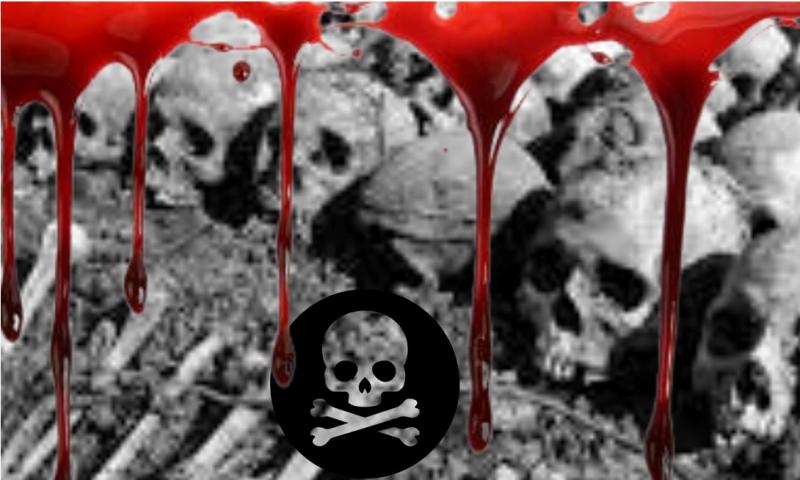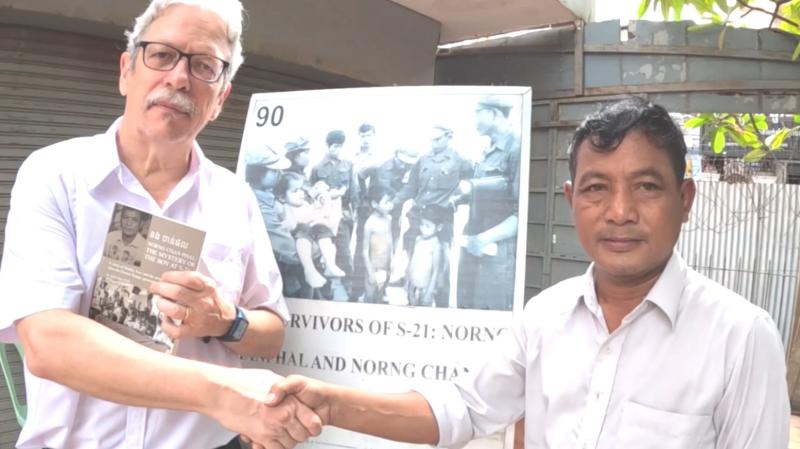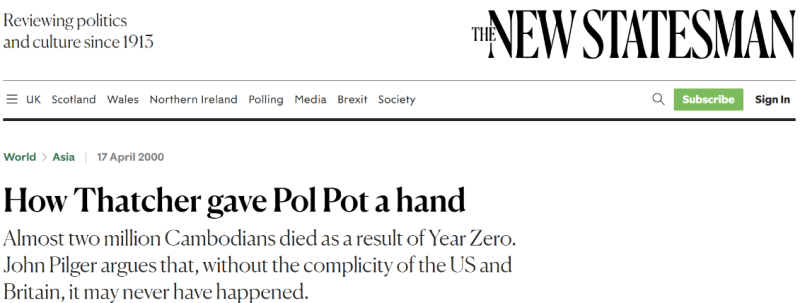
Stopping the Murderous Khmer Rouge: How Vietnam Confronted Asia’s Forgotten Holocaust
In Cambodia, beauty and intellect became crimes: the beautiful were forced to marry the ugly, the educated to wed the illiterate. Cities, hospitals, and schools were erased. Millions were slaughtered on an industrial scale to forge a Khmer “master race.” This was a 20th-century fascist Holocaust—not in Germany or elsewhere in Europe, but in Asia—largely forgotten outside its borders (Chandler, 1999; Kiernan, 2008).
Vietnam was the lone nation to confront and defeat this nightmare, while the United States, other Western powers, and China either stood by or even defended it. Only Vietnamese resistance ended the horror (Rowley, 2011; Chanda, 1986).
Now, as the 21st century witnesses another Holocaust targeting Palestinians at the hands of a self-styled, God-chosen Jewish “master race,” memories of Cambodia’s nightmare return. The Asian Holocaust—like Europe’s Jewish tragedy—was driven by the same deadly ideology of racial supremacy, yet it received far less attention, leaving its lessons unheeded by the world.
The Rise of the Khmer Rouge
Pol Pot, born Saloth Sar in 1925, rose to lead the Khmer Rouge, Cambodia’s radical and purportedly Maoist party (Chandler, 1999). Though initially influenced by Marxism-Leninism, he twisted ideology into a grotesque nationalist fantasy. Unlike the internationalist socialism of Vietnam or Cuba, Pol Pot’s vision demanded complete racial and cultural purification—a Khmer “master race” forged through terror. Centuries of tension with Vietnam and fear of Vietnamese dominance fueled his paranoia, leading him to frame ethnic Vietnamese, Chinese, and other minorities as existential threats, thereby justifying extreme measures to “purify” Cambodia. In practice, his ideology bore more resemblance to the racial doctrines of Hitler, Mussolini, or even Zionist nationalist thought than to Karl Marx (Kiernan, 2008)
By 1975, following King Sihanouk’s resignation, Pol Pot declared Democratic Kampuchea. Urban centers were emptied, schools closed, hospitals destroyed, and currency abolished. Millions of intellectuals, professionals, and perceived “undesirables” were executed or worked to death in forced labor camps. Even those wearing glasses were deemed enemies of Angkar, the Khmer Rouge “Organization” that ruled the country with absolute cruelty. Vietnamese civilians along the border were targeted in brutal raids. Between 1975 and 1979, roughly two million Cambodians—about a quarter of the population—perished (Chandler, 1999; Rowley, 2011).

Vietnam’s Response and the Liberation of Cambodia
Vietnam initially pursued diplomacy, but repeated massacres—including the killing of over 3,000 villagers in Ba Chúc on the Vietnamese side of the border in 1978—made military action unavoidable (Rowley, 2011; Chanda, 1986). The virulent Vietnamophobia of Pol Pot and his regime had made ethnic Vietnamese prime targets in Cambodia. Tensions escalated further when, on July 20, 1977, Hun Sen, a young Khmer Rouge officer, defected to Vietnam and called for intervention, setting the stage for a decisive military response.
By 1979, hundreds of thousands of Vietnamese volunteers had crossed the border to support Cambodian forces resisting the genocidal regime. On January 7, Phnom Penh fell, marking the end of Pol Pot’s reign of terror. Hun Sen’s new government was established, and in 1981, the Khmer Rouge officially—and paradoxically—renounced communism, an ideology they had at best only superficially upheld (Rowley, 2011). Vietnamese forces continued fighting for nearly a decade to eliminate the remaining Khmer Rouge forces and stabilize Cambodia.
Vietnamese soldiers were also responsible for recovering the remains of fallen comrades, reflecting the human and ethical aspects of their mission. Thousands of remains were repatriated, demonstrating Vietnam’s ongoing commitment to solidarity and responsibility (Rowley, 2011).

I have interviewed survivors of this holocaust in Cambodia as well as Vietnamese soldiers who liberated them. Watch it here.
Geopolitical Tensions: China, the United States, and the USSR
The Cambodian intervention coincided with heightened tensions along Vietnam’s northern border. Deng Xiaoping, after consolidating power in China, redirected support from Vietnam to the Khmer Rouge, supplying weapons, funds, and logistical aid (Brzezinski, 1983; Chanda, 1986). The U.S., seeking to contain Soviet influence, tacitly supported China and Pol Pot, while the U.K., Thailand, and Singapore also aided the Khmer Rouge (Munro & O’Dwyer-Russell, 1999).
On February 17, 1979, China launched a full-scale invasion of northern Vietnam with 300,000 troops and 400 tanks, claiming a “punitive war.” In reality, the invasion sought to distract Vietnam from Cambodia and strengthen the Khmer Rouge. Chinese forces committed atrocities against civilians, including the massacre of 43 villagers in Truong village (Chanda, 1986; Rowley, 2011).
The border war claimed more than 26,000 Vietnamese lives. Despite sporadic clashes that continued throughout the 1980s, Vietnam finally withdrew from Cambodia in 1989. Two years later, in 1991, relations with China were formally normalized under President Jiang Zemin (Rowley, 2011).
Western Complicity
Even after Pol Pot’s fall, the Khmer Rouge survived thanks to international support:
United States: Secretly provided $85 million in aid (1980–1986) and diverted humanitarian programs to Khmer Rouge forces (Rowley, 2011; Brzezinski, 1983).
United Kingdom: SAS units trained Khmer Rouge troops in explosives, rockets, and psychological warfare (Munro & O’Dwyer-Russell, 1999).
Thailand & Singapore: Served as logistics hubs and sanctuaries for Khmer Rouge leaders (Rowley, 2011).

Meanwhile, only the USSR and Czechoslovakia openly supported Vietnam and condemned the Khmer Rouge. The UN recognized “Democratic Kampuchea,” the Khmer Rouge’s government in exile, as the legitimate government of Cambodia, while Vietnam had to endure sanctions and international isolation until 2006 (Rowley, 2011). This episode revealed the deep hypocrisy of the West: while tirelessly proclaiming its commitment to human rights, it not only ignored one of the most brutal and systematically oppressive regimes of the 20th century but even facilitated its actions.
The Khmer Rouge’s “Second Life”
Militarily defeated, the Khmer Rouge regrouped along the Thai-Cambodian border, formed the National Army of Democratic Kampuchea (NADK), and joined the Coalition Government of Democratic Kampuchea (CGDK). At the same time, China, the USA, and ASEAN provided resources for further attacks on Vietnam-backed Cambodia (Rowley, 2011).
Despite this external support, the Khmer Rouge never regained significant internal control. By the late 1980s, their strategic relevance had waned with the end of the Cold War. Pol Pot died in 1998, and Ta Mok—better known as ‘The Butcher,’ one of the regime’s most notorious figures and a loyal supporter of Pol Pot—was captured in 1999, marking the definitive collapse of the movement (Rowley, 2011; Chandler, 1999).
Humanitarian Perspective: Vietnamese Solidarity
Vietnam’s intervention was born of compassion and solidarity—not of profit or political ambition. Soldiers volunteered, often at the cost of their own lives, to shield Cambodian civilians from the horrors of the Khmer Rouge. In 2014, Prime Minister Hun Sen reflected,
"Without Vietnam’s intervention, there would be no me, no Cambodia, and no life for millions of Cambodians." (Hun Sen, 2014)
This is the essence of true solidarity with the oppressed: acting decisively when the world turns away, placing human life above ideology, expedience, or the shifting tides of geopolitics.
Conclusion
The Vietnamese intervention in Cambodia (1979–1989) stands as a powerful testament to moral courage in the face of unimaginable horror. Against all odds, and while the country was still recovering from the devastating consequences of the American war, Vietnam ended one of the deadliest genocides of the 20th century, repelled foreign aggression, and navigated the treacherous currents of the Cold War—placing humanity above politics in the process.
The rise, fall, and ‘second life’ of the Khmer Rouge reveal the deadly combination of ideology, authoritarianism, and foreign interference. Yet in the midst of this darkness, Vietnam’s actions demonstrate a timeless truth: when the world hesitates, it is solidarity, courage, and the steadfast defense of human life that can change the course of history.
References
Brzezinski, Z. (1983). Power and Principle: Memoirs of the National Security Adviser 1977–1981. New York: Farrar, Straus and Giroux.
Chandler, D. P. (1999). Brother Number One: A Political Biography of Pol Pot. Boulder: Westview Press.
Chanda, N. (1986). Brothers Enemy: The War After the War. New York: Harcourt Brace Jovanovich.
Hun Sen. (2014). Speech at the National Assembly, Cambodia.
Kiernan, B. (2008). The Pol Pot Regime: Race, Power, and Genocide in Cambodia under the Khmer Rouge, 1975–79. New Haven: Yale University Press.
Munro, D., & O’Dwyer-Russell, S. (1999). SAS and the Khmer Rouge: Secret Training Programs in Thailand. London: Independent Investigative Report.
Rowley, K. (2011). Second Life, Second Death: The Khmer Rouge After 1978. Copenhagen: NIAS Press.
«Stopping the Murderous Khmer Rouge: How Vietnam Confronted Asia’s Forgotten Holocaust»